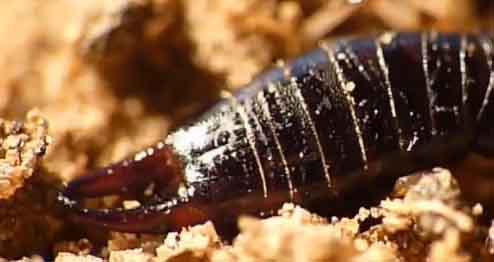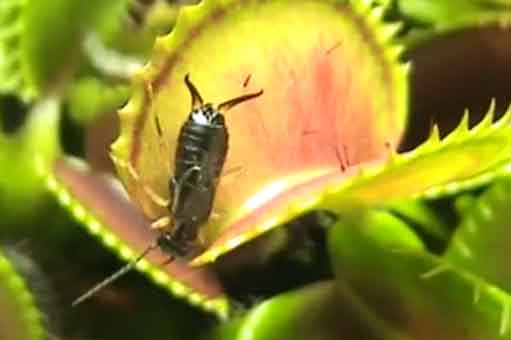Earwig
Earwigs
Earwig Scientific Name: Forficula auricularia
All about Earwigs
We all know an earwig when we see one! These long, red, wiggling creatures play an integral role in landscaping and can prove beneficial in the garden, feeding on aphids – any gardener’s nemesis. Though this insect proves highly useful in eliminating harmful garden pests, earwigs aren’t without fault. They have the potential to cause devastation to seeding vegetables or flowers if left uncontrolled.
Earwigs are common in America and Europe. The species now found in America was introduced to the continent by accident, brought from Europe in the early 1900’s. California is host to a type of these insects called the Striped earwig, which has proven especially pesky to residents. These types of earwig will aggressively invade residences to build their nests. Adding to this nuisance, earwigs also release an unpleasant smell when stepped on.

Earwig Pincers
Earwig Habitat
These creepy creatures are common in America and Europe and are known to inhabit almost every continent on Earth. They are a prevalent insect, outnumbering humans by the thousands, and are easily identifiable. Earwigs, much like most humans, prefer moderate to warm climates. There are exceptions to this, however, as they have even been found in the harsh planes of Africa.
Earwigs commonly live in yards and gardens. They often burrow under rocks, piles of wood or under leaves. These insects are omnivorous scavengers that will feast on anything found in woodland areas, under rocks or in damp areas. Most commonly the earwig will ingest smaller insects, aphids and leaves. Occasionally, these insects will be found indoors or within the home, entering by means of the plumbing system. Earwigs in the house is a common pest problem as they search for a source of food and moisture.

Earwig In Fly Trap
Life Cycle of Earwigs
Earwigs mate during the fall and winter. Males and females live together and enter the mating season side by side. You will often find them scuttling around together in a courtship during these months.
After mating, the females retain the males’ sperm for months in a rare process known as delayed fertilization. The male will leave his mate in spring to allow her to lay between 20 and 80 shiny, white eggs. This process can take a few days for the female to complete. As the insects within the eggs mature, they become kidney shaped and dark brown – much like the color of their shell. A small number of earwigs forgo the egg stage, giving birth to live young that are fed by a placenta replicate after birth.
Earwigs are one of the few insects that show maternal care to their young. From a species normally devoid of social encounters, this is quite a remarkable act. Earwig mothers are attentive, defensive and caring of her eggs. She will even clean them rigorously. Earwig offspring become fully mature after they have molted four to six times.
Earwigs and Humans
As most people know, these creepy creatures are particularly common in America and Europe and while they generally keep to themselves, they are easy to locate. Earwigs are not known to carry any diseases that might affect humans or animals and are not usually considered a pest unless found in large numbers.
Earwigs influence agricultural crops for both the positive and the negative. While they are an avid hunter of the aphid, some believe that they are a pest – damaging seedling vegetables and crops. If their population is out of control, this could potentially amount to thousands of dollars of commercial crop profits lost. But for the average garden, they are usually a sign of a well-kept and balanced ecosystem.
Earwig Entomology
Earwig Scientific Name: Forficula auricularia
Earwigs belong to the Dermaptera family. There make up one of the smallest insect orders of twelve families of nearly 2,000 different species. Earwigs are also nocturnal, favoring nighttime over day. The family name Forficula auricularia is Greek and takes from the words skin and wing to complement its color and unique wings.
Earwigs are typically flat, with an elongated body, typically measuring under an eighth of an inch. The Saint Helena Earwig, however, grows up to three inches long and is the largest species of earwigs currently known. These insects sport other characteristics including pincers, hind-wings and hard shells. The Epezoic species, sometimes considered ectoparasites, are wingless and much less common.

